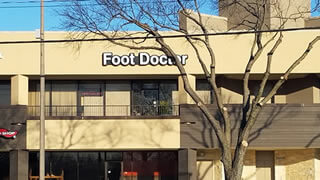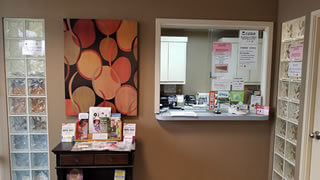Dallas (214) 340-8885
Athens (903) 677-9090
Gun Barrel City (903) 887-4341
Dallas (214) 340-8885
Athens (903) 677-9090
Gun Barrel City (903) 887-4341
While proper foot care is important for everybody, senior citizens have the tendency to be more susceptible to certain foot conditions. The elderly should therefore be well informed about any problems that may arise and about what they can do to properly avoid or treat them.
Some of the most common foot problems seniors are susceptible to include foot ulcers, ingrown toenails, fallen arches, and fungal nails. A foot ulcer is an open sore on the foot and can be a result of diabetes and decreased sensation in the feet. An ingrown toenail is defined as when the nail grows into the side of the toe. Fallen arches are indicated by the instep of the foot collapsing. A fungal nails is a condition that results in deformed and discolored toenails.
In order to avoid these conditions it is recommended that the feet be inspected by the patient on a regular basis. If these inspections are carried out routinely, there is a good likelihood that problems can be identified before they become severe, or can even be avoided altogether. If any abnormality is discovered, it is important that the individual consult a podiatrist for diagnosis and information on treatment options.
Proper foot hygiene is also important. Making sure that you always have clean, dry socks on can be a major deterrent to many different problems including bacterial infections, foot odor, and certain types of fungus. Wet feet are a major cause of many of these problems. If your socks get wet, it is important to change them. Walking around in wet socks may not only lead to various infections, but can irritate the skin and result in a number of various complications. Clean, dry feet are less likely to be affected by fungal and other infections.
As people age, the fat present on your feet begins to deteriorate. The protective nature of this fat keeps the feet healthy by providing a barrier between your bones and the ground. This also aids in giving the skin on the feet a certain amount of elasticity. This is one factor that causes elderly people to develop some serious foot issues. Foot moisturizers can be helpful to avoid certain problems associated with this. However, water-based moisturizers do not work as well for elderly people as they do for the young. Instead, it is more effective to use an emollient instead. An emollient is effective because it binds the water in the foot, keeping it from becoming absorbed too readily which will result in dry skin. Emollients also have a special property called occlusion, which provides a layer of oil on the skin. This layer prevents the foot from drying up and can be very effective in treating dry skin disorders. If you can keep the skin on your feet healthy, this will substantially reduce the number of foot problems you will encounter in old age.
Proper footwear is another way to keep feet healthy. Shoes that fit well and provide proper support help prevent ingrown toenails and fallen arches.
Certain medical conditions such as diabetes or poor blood circulation increase the risk for foot issues. For individuals with any of these conditions it is extremely important to conduct regular foot inspections to make sure that there are no sores or infections present.
 Practicing proper foot care is often overlooked, and this can be particularly true for the population of the elderly. Trimming the nails correctly is essential in preventing infections that may occur, especially in diabetic patients. Additionally, developing ingrown toenails, bunions, or warts may be common among the elderly who are not able to take care of their feet correctly. Proper circulation is vital to the lower extremities, and this may be accomplished by engaging in foot massages, in addition to elevating the feet and soaking them in warm water. Choosing the correct shoes to wear will also help in maintaining proper foot care, and selecting breathable materials will help in preventing fungus from occurring. Please consider scheduling a consultation with a podiatrist if you have questions about how to care for elderly feet.
Practicing proper foot care is often overlooked, and this can be particularly true for the population of the elderly. Trimming the nails correctly is essential in preventing infections that may occur, especially in diabetic patients. Additionally, developing ingrown toenails, bunions, or warts may be common among the elderly who are not able to take care of their feet correctly. Proper circulation is vital to the lower extremities, and this may be accomplished by engaging in foot massages, in addition to elevating the feet and soaking them in warm water. Choosing the correct shoes to wear will also help in maintaining proper foot care, and selecting breathable materials will help in preventing fungus from occurring. Please consider scheduling a consultation with a podiatrist if you have questions about how to care for elderly feet.
Proper foot care is something many older adults forget to consider. If you have any concerns about your feet and ankles, contact Dr. Jonathan Kletz from Texas Foot Works. Our doctor can provide the care you need to keep you pain-free and on your feet.
The Elderly and Their Feet
As we age we start to notice many changes in our body, but the elder population may not notice them right away. Medical conditions may prevent the elderly to take notice of their foot health right away. Poor vision is a lead contributor to not taking action for the elderly.
Common Conditions
Susceptible Infections
Diabetes and poor circulation can cause general loss of sensitivity over the years, turning a simple cut into a serious issue.
If you have any questions please feel free to contact one of our our offices located in Dallas, Athens, and Gun Barrel City, TX . We offer the newest diagnostic and treatment technologies for all your foot and ankle needs.
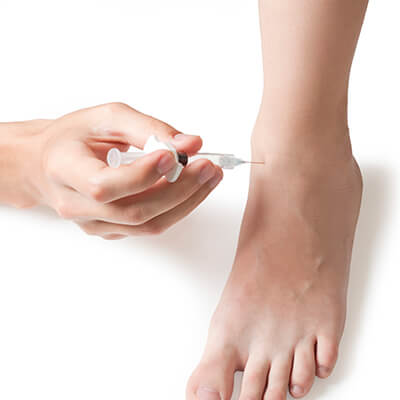 Platelet rich plasma, or PRP, is blood taken from a patient and spun in a centrifuge, concentrating the amount of platelets and growth factors. This plasma, containing a very high concentration of platelets, is re-injected into the site of injury or damage, inducing the body to repair damage to muscle, tendons, ligaments, and soft tissue. Although the body does this naturally when an injury occurs, the PRP helps speed the healing process.
Platelet rich plasma, or PRP, is blood taken from a patient and spun in a centrifuge, concentrating the amount of platelets and growth factors. This plasma, containing a very high concentration of platelets, is re-injected into the site of injury or damage, inducing the body to repair damage to muscle, tendons, ligaments, and soft tissue. Although the body does this naturally when an injury occurs, the PRP helps speed the healing process.
Many injuries to the foot, especially those affecting tendons, do not heal well because poor blood supply to the area prevents healing platelets and growth factors carried by the blood from getting to the injury site. PRP injections can help fix this problem and speed recovery.
This is the first regenerative treatment ever for damaged muscles, tendons, and ligaments. It avoids the need for surgery, and as it requires only the insertion of a needle, is minimally invasive. The injection of PRP is done with the use of ultrasound to ensure the proper placement of the platelets.
Once the first injection is received, the patient will return to the doctor's approximately 2 to 3 weeks later to be checked on how well the treatment is moving along. As with most treatments, each patient's response is different. Based on a patient's condition, the doctor will make the decision about how many more injections will be needed. Acute and chronic injuries will require more injections than mild ones.
Common injuries of the feet such as ankle sprains, Achilles tendonitis, and plantar fasciitis, as well as acute and chronic tendon and joint diseases such as arthritis, can all be treated with PRP injections. For many, this therapy has lead to greatly reduced pain and increased function of the foot. Combining exercise or physical therapy with the PRP injections will help increase the success of the treatment.
This treatment, being minimally invasive, means that surgery can be avoided, in many cases, and recovery time cut down. Other benefits of PRP injections are a decrease in scar tissue and fibrosis to the damaged area, as well as increased range of motion, flexibility, and strength. The risks from using PRP injections as a treatment is very low as the patient is injected with their own blood, so that there is no risk of rejection or of foreign bloodborne disease. As with any injection into the body, there is a risk of infection, but this is very rare. Research is showing that PRP may have an anti-bacterial property that would further decrease the risk of infection.
 EPAT (Extracorporeal Pulse Activation Technology) Laser therapy is a highly effective technology that has been used to accelerate the body’s natural healing process. The treatment itself is painless and non-invasive. It works by using pressure waves to treat and heal internal pain due to injuries that might be slow to heal. EPAT Laster therapy has been FDA approved and hasn’t been found to have any major side effects, other than minor discomfort that may be experienced while receiving the treatment. Some injuries that the EPAT Laser therapy works well with are: plantar fasciitis, stress fractures, tendonitis, and stress reactions.
EPAT (Extracorporeal Pulse Activation Technology) Laser therapy is a highly effective technology that has been used to accelerate the body’s natural healing process. The treatment itself is painless and non-invasive. It works by using pressure waves to treat and heal internal pain due to injuries that might be slow to heal. EPAT Laster therapy has been FDA approved and hasn’t been found to have any major side effects, other than minor discomfort that may be experienced while receiving the treatment. Some injuries that the EPAT Laser therapy works well with are: plantar fasciitis, stress fractures, tendonitis, and stress reactions.
EPAT works by the use of shock waves; they are essentially sound waves that operate at a high speed and pressure. Prior to the use of the treatment, a gel is applied to the area that is to be treated. This gel helps the shock waves from the laser reach maximum efficiency. When the actual treatment takes place, the applicator is moved over the affected area while the waves are simultaneously being released. When the therapy session is complete, the gel is wiped off, and the patient is able to be mobile immediately afterward. Each session lasts approximately 5-10 minutes and usually 3-4 treatment sessions are necessary at weekly intervals.
There are many benefits that come along with choosing EPAT Laser therapy as your form of treatment; one of them being that there are no incisions necessary. The fact that this treatment is completely non-invasive eliminates any possible complications that may occur as a result of surgery. Over 80% of people who opt for this therapy have experienced a successful outcome. Furthermore, this method is safe and cost-effective. While some patients report their pain goes away after the first treatment, it may take up to four weeks for pain relief to begin.
One out of ten broken bones is reported to be in the feet. When an object crushes, bends, or stretches the bone beyond acceptable ranges, bones break. A break in the foot is either a fracture or a straight break.
The location of any break can tell you how the break happened. Toes, for instance, break typically as a result of something being kicked hard and with great force. Heel breaks almost always are a result of an improper landing from a tall height. Twists or sprains are the other two frequent occurrences. As with all usual breaks, they result from unexpected accident or sudden injury. As with stress fractures, breaks form as a process over time from repeated stress on already present cracks. Runners, dancers, and gymnasts are the usual athletes who receive this type of break. Stress fractures result from incredible pressure on the feet. It is no surprise these athletes bear the majority of reported fractures.
Pain, swelling, bruising, and redness are all indicative of the typical symptoms from a broken foot. Severe pain—to the point of not being able to walk—usually depends on the location of the break in the foot. Toes are on the lower scale of pain threshold, but heels are high, as are a few other particular bones. As the severity of the broken foot increases, symptoms like blueness, numbness, misshaping of the foot, cuts, or deformities will become apparent. These symptoms indicate the need to see a medical professional with access to an x-ray facility.
Prior to seeing a specialist, precautions should be taken to reduce pain and swelling. Elevate and stabilize the foot, and refrain from moving it. Immobilization of the foot is the next priority, so creating a homemade splint is acceptable. Keep in mind that while creating a splint, any increase of pain or cutting off blood circulation means that the splint should be removed immediately. Use ice to decrease swelling and relieve pain symptoms.
When dealing with a medical center, the patient should note that the treatment can vary. The treatment will depend on the severity of the fracture and the cause of the break. Crutches, splits, or casts are common treatments while surgery has been known to be used in more severe cases in order to repair the break in the bones.
 There are many ways to break your foot, and we wouldn’t recommend any of them. Severe pain when walking, in addition to bruising, are common symptoms of a foot that has been fractured. If limping occurs and the foot is tender when touched, these may be additional signs of a break in the bone. Obvious symptoms may include a deformity of the foot, which may indicate a joint dislocation. When the structure of the bone has been damaged, an x-ray is generally used to determine the extent of the injury. Once diagnosed, the injury may be treated by wearing a boot to help eliminate weight that is placed on the foot. A consultation with a podiatrist is advised for a proper diagnosis and additional treatment options.
There are many ways to break your foot, and we wouldn’t recommend any of them. Severe pain when walking, in addition to bruising, are common symptoms of a foot that has been fractured. If limping occurs and the foot is tender when touched, these may be additional signs of a break in the bone. Obvious symptoms may include a deformity of the foot, which may indicate a joint dislocation. When the structure of the bone has been damaged, an x-ray is generally used to determine the extent of the injury. Once diagnosed, the injury may be treated by wearing a boot to help eliminate weight that is placed on the foot. A consultation with a podiatrist is advised for a proper diagnosis and additional treatment options.
A broken foot requires immediate medical attention and treatment. If you need your feet checked, contact Dr. Jonathan Kletz from Texas Foot Works. Our doctor can provide the care you need to keep you pain-free and on your feet.
Broken Foot Causes, Symptoms, and Treatment
A broken foot is caused by one of the bones in the foot typically breaking when bended, crushed, or stretched beyond its natural capabilities. Usually the location of the fracture indicates how the break occurred, whether it was through an object, fall, or any other type of injury.
Common Symptoms of Broken Feet:
Those that suspect they have a broken foot shoot seek urgent medical attention where a medical professional could diagnose the severity.
Treatment for broken bones varies depending on the cause, severity and location. Some will require the use of splints, casts or crutches while others could even involve surgery to repair the broken bones. Personal care includes the use of ice and keeping the foot stabilized and elevated.
If you have any questions please feel free to contact one of our our offices located in Dallas, Athens, and Gun Barrel City, TX . We offer the newest diagnostic and treatment technologies for all your foot and ankle needs.
To ensure your convenience, below is the information you need about our podiatry offices, including our hours, location, appointment scheduling and insurance acceptance.
Appointments
If, for any reason, you cannot keep a scheduled appointment or will be delayed, please call as soon as possible. Charges may be incurred for appointments cancelled less than 24 hours before scheduled appointment time.
Insurance
Our office accepts a variety of PPOs, and other health plans. Please call our office to verify acceptance of your insurance carrier.
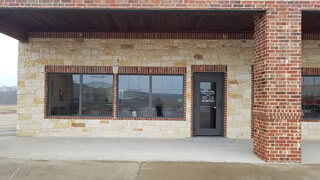
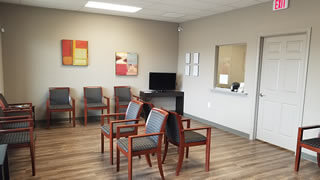
To ensure your convenience, below is the information you need about our podiatry offices, including our hours, location, appointment scheduling and insurance acceptance.
Appointments
If, for any reason, you cannot keep a scheduled appointment or will be delayed, please call as soon as possible. Charges may be incurred for appointments cancelled less than 24 hours before scheduled appointment time.
Insurance
Our office accepts a variety of PPOs, and other health plans. Please call our office to verify acceptance of your insurance carrier.
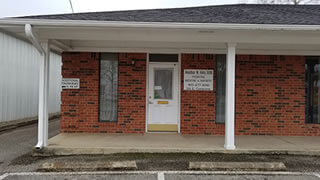
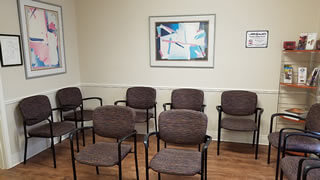
To ensure your convenience, below is the information you need about our podiatry offices, including our hours, location, appointment scheduling and insurance acceptance.
Appointments
If, for any reason, you cannot keep a scheduled appointment or will be delayed, please call as soon as possible. Charges may be incurred for appointments cancelled less than 24 hours before scheduled appointment time.
Insurance
Our office accepts a variety of PPOs, and other health plans. Please call our office to verify acceptance of your insurance carrier.
